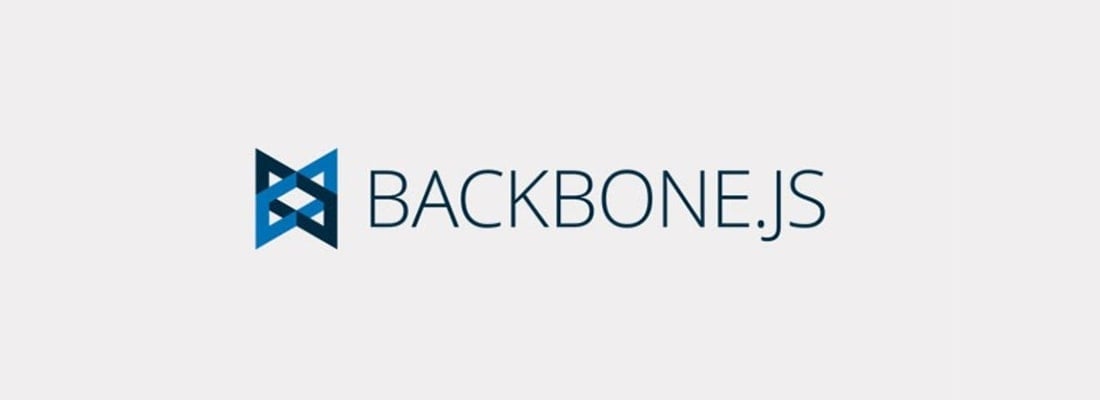Quick Summary:
The blog covers a list of React alternatives – JS web frameworks that help you create flawless frontends for your web application. I was attending a talk show on a technical topic where I gathered React alternative frameworks discussed by experts. Have a read and let me know what you think. Do share your insights and reshare the blog in your community.
Table of Contents
Prologue
Once, I attended a tech-talk show where a host was anchoring, and six React experts participated in the show as guests. They came across a tricky question in the show, and they had to answer the question: Which is the best alternative to React.js that you shall use in your next project?
React.js is a marvelous JavaScript library that employs Virtual DOM. React is the prime choice of developers for building single-page applications. All the six experts were tensed, but they had no choice but to think and answer along with the logical reasons.
React experts altogether started to brainstorm, and they began with noting down the flaws of using the ReactJs framework to come close to finding the best React JS alternatives.
Why Not React JS?
“Why do we need to look for alternative frameworks when we already have React.js?” you might be wondering this probably. And if truth be told, you are completely correct! However, there are some reasons why developers need to switch to React JS alternatives at a point.
Why Do You Need Alternatives To React Js?
This is a million-dollar question among various newbies because no one wants to abandon React JS at once upon discovering its benefits.
However, developers continue to request trustworthy React JS alternatives. Below are the reasons that drive developers worldwide to seek out the most basic ReactJS alternatives.
- Managing a large React JS library is difficult: Most React developers understand how difficult it is to handle the React.js framework’s enormous library size. Indeed, you cannot afford to make such a large investment in a framework that necessitates a large memory area.
- MVC architecture is lacking in React: The view functionality is not managed by its Model or Controller. As a result, you look for a view-oriented React framework.
- Steep learning curve: Because React has a steep learning curve, developers must devote a significant amount of time to learning new technology. The start of the project has been postponed.
- Beginners will find it difficult: Many React.js developers have discovered that the JSX React documentation is difficult to comprehend. When mastering this framework, beginners are never at ease.
In a nutshell, React has a steep learning curve, and developers need to invest a lot of time in learning new technology. Project ignition is delayed. As a result, many React.js developers find it hard to grasp the documentation of JSX React. In the end, beginners are never comfortable with this framework.
ReactJS And React Alternatives: When To Use?
To find a middle-ground as to when should you opt for a React alternative, the experts have classified the following scenarios:
When To Use ReactJS?
- Building a user interface that is both engaging and elegant.
- The requirement for reliable technology that can handle a high traffic volume.
- Restricted time to find qualified programmers.
- Limited time for developing a web project. Developing applications that will scale in the future.
When To Use React Alternatives?
- You do not wish to deal with any form of issue. Particularly with the state library.
- You run short of time and opportunity in looking for a certified ReactJS developer.
- You want to experiment with a different front-end framework.
To find a better option against the React Js framework, the experts gathered a list of top 6 lightweight React alternative frameworks that entrepreneurs like you can consider for your upcoming projects.
In this blog, I am recalling and bringing the list of best UI frameworks for React that those experts realized in the tech-talk show. Along with the javascript frameworks, I have mentioned the pros and cons of each framework and their comparison with React.js.
Important Characteristics of An Ideal ReactJS Alternative
If you’re looking for React alternatives, you should first figure out why you need them. Don’t rush in just because there’s a new tool. Play large, but don’t lose sight of logic. You probably don’t want to spend money reworking your project or addressing crucial concerns such as functionality, safety, etc. Below is a list of the essential characteristics that an ideal ReactJS Alternative should have.
- Provide a thin compatible layer that you can utilize in your React JS development project.
- Encourage the use of JSX. Most React JS alternatives do not support PropTypes, which is completely acceptable for most projects.
- Have a React-compatible API. This denotes you can use any of the library’s imports instead of React DOM.
- Allows you to develop a great-looking interface design without sacrificing user experience quality.
- They have clear and reliable architecture, as well as comprehensive documentation.
- Have a welcoming developer community (making it easier to hire coders for your project).
- Ensure the security, performance, and smooth operation of web projects.
- Have a lot of extra tools and add-ons and be compatible with third-party libraries.
Top 06 React Alternatives and Why You Should Consider Them: Detailed Comparison

Finding a framework that offers the flexibility and lightness of React is one of the most challenging tasks when looking for React JS alternatives. Sometimes, developers can become enamored with a framework to a point where they don’t want to think of switching it.
Choosing the best React JS alternatives, on the other hand, might be tough. Stability, ecosystem support, APIs, performance, and the package size are just a few small factors you need to consider. Below is a compiled list of the top 6 React Alternatives crafted by the experts. Take a look!
1. Preact

Jason Miller introduced Preact under the open-source MIT license. You can think of Preact as a lightweight javascript framework- an alternative to the React library for developing mobile or web applications and progressive web apps PWA.
Preact was not intended to be a replacement or reimplementation of React. It is the same API and ECMA script with a lightweight alternative to React. However, one can use most of the reusable components of React using Preact with the compatibility layer. You get to opt and use both these libraries or switch between them according to your project needs.
React.js remains at the top of the market because of its components and usability. Still, you can utilize the same with Preact and the added advantage of super-fast speed and performance.
Preact has by far gathered 31.6k Github stars and 1.8k forks.
Strong Sides Of Preact
- It is compact, precise, and lightweight in size (3KB), so your application can perform faster.
- Preact uses ES6 API, enabling you to uplift your application from React to Preact very easily. You can even adapt it as a library to create fantastic user interfaces for your project.
- Entrepreneurs can create new projects easily by using the official CLI without getting into Babel and Webpack configuration.
- You can get all the help from the official website examples and Preact documentation to kick-start your application development.
- Along with all the inspiring features of React, the Preact library also consists of some special features like the LinkedState.
Cons Of Preact
- You do not get context support.
- For the stateful functionalities of your application, the createClass function is missing. Preact only allows you to use ES6 class and stateless components.
- Preact doesn’t care about the React propTypes.
- The community size is yet to reach the competition with React.
- Preact lacks innovation and mostly mimics React.
Preact vs React
- API: Not all the React features are present in Preact; it contains only a small part of the React Application Interface functionality.
- Size: As I mentioned initially, Preact is much lighter than React. React is 5.3 KB, whereas Preact is only 3 KB.
- Performance: Because of being lightweight, Preact is much faster than React applications.
The Take
Although Preact is the smallest React JS alternative, its amazing capabilities make it a wonderful choice for developers building websites. If the performance of your application is not a top issue for you, Preact will entice you to learn more about it.
However, if you want to create an application similar to Facebook’s synthetic event system, Preact may not be the best option for you. This is because it lacks the library you’ll require.
In a nutshell, choose React when you want to build complex and feature-rich applications, and choose Preact when building single-page applications, landing pages, and small apps.
Enable your apps to have the best UI solutions in the quickest possible time.
We are a top-notch ReactJS development company with experienced react developers who aim to hitch your customer’s attention. Hire ReactJs Developer from us and upscale your development team.
2. Inferno JS

React developers introduced Inferno in 2017 as an experiment to check whether a library can improve the performance, battery, and UX of mobile applications. Inferno can develop client and server-side interfaces with fantastic speed, performance, and isomorphic rendering.
Inferno is explicitly built for the DOM and is partially synthesized for performance. It is open-source and recognized as the Javascript GUI/widget framework. To bridge the gap with React, one can use the Inferno Compatibility package.
Inferno is ideal for building modern user interfaces. It gathers 15.4k stars and 669 forks on Github. It offers native animation support and is isomorphic for client and server sides. Inferno JS is one of the fastest JavaScript libraries available, clocking in at 9k. Since its initial release in 2016, it has been in active development.
It supports Hyperscript, JSX, and the Vanilla createElement function besides many popular state management frameworks, including Redux, MobX, and Cerebral JS.
Inferno JS Pros
- Inferno is also a lightweight React alternative.
- It is super-fast as it uses internal objects for optimizations.
- Instead of copying React, Inferno has some unique lifestyle methods.
- Inferno uses the classic old CSS properties.
- You get add-ons like routing, server-side rendering, and more.
Inferno JS Cons
- Inferno is not yet backed up by adequate community size. Because of the smaller ecosystem, you do not get timely help and support.
- Unlike React, Inferno does not support Hooks, Memo, suspense, or lazy to keep the library compact. However, you can keep considering these features while writing in Inferno.
- The setState works synchronously.
- To use any React components, you first need to write and use a React component.
Inferno vs React
- React has a fully synthetic event system, whereas Inferno only supports partial synthetic events, including certain functions such as onClick.
- You can not use React Native with Inferno as you can in React. Inferno surrounds the DOM structure for browser/server edits.
- It lacks support for React legacy strings like ref, callback, or createRef, etc.
- Using Inferno, you can get lifecycle events based on functional components instead of the ES2015 classes.
- You can debug your Inferno apps using React dev tool extensions by using “inferno-devtools” command.
- You can set up your styles in Inferno using the CSS property name method.
The Take
If you want to create a high-performing web project, Inferno is an excellent choice. Why? It focuses on performance.
3. Backbone JS

Jeremy Ashkenas, who developed CoffeeScript and Underscore.js, also introduced Backbone.js, which is based on the MVP (model-view-presenter) paradigm, and it has a RESTfull JSON interface. You can use Backbone.js as an alternative to React.js in creating single-page web applications to keep several pages synchronized.
Backbone.js attracts developers when they want to use a simple framework having a Javascript structure with models. It is an open-source framework with 27.6k stars on GitHub.
It is one of the greatest and most appropriate ReactJS alternatives. This is because it provides a wonderful design architecture for massive JavaScript applications and value-binding, custom events, and other capabilities. Alongside, Backbone tags several features along with it that users can consider. Some include Rich API collections with multiple attributes and declarative event handling views. The best part is, all functions can be integrated with your app via a RESTful JSON interface.
Backbone.js Pros
- Uses a template engine for building your application’s flexible UI.
- It enables complex user interaction very easily.
- You can call all the underscore.js methods using your backbone.js objects.
- Backbone.js is extendable by using the varied plugins available.
- Your backbone.js classes can listen and trigger because they extend the event class.
Backbone.js Cons
- While using backbone.js, your developers can easily get into coding mess.
- Does not support data binding.
- Developers need to invest time and effort in learning the new syntax of coding backbone.js.
- It relies on underscore.js and is not independent.
Backbone.js vs React.js
- Backbone is comparatively much smaller and performance as compared to React.
- Backbone.js can avail support for routing and deep linking, unlike React.js.
- React.js still leads the market share in the top 10k and 100k sites.
- Backbone.js has proven stats that make it a master in industries like Arts, Games, Health, Entertainment, and more.
The Take
Several dynamic applications, including Trello, use Backbone.js. This enables developers to create client models, as well as update and reuse code, more quickly. As a result, it is effective at dynamically processing updates, serving the client, and maintaining constant communication with the server.
When compared to other client-side MVC frameworks, Backbone.js has the simplest requirements for constructing a web application. Plugins and extensions, on the other hand, can be used to extend the capabilities. However, note that Backbone.js should not be used if the development team wants to design an end-to-end solution in one framework.
Buckle up your frontend with the latest trending updates in the market!
Our enthusiastic UI experts pose all the demanding nerves of the industrial edge. Hire frontend developer from us now & achieve your business goals.
4. Ember JS

Yehuda Katz developed Ember JS in 2011 for creating web applications. It was earlier named SproutCore MVC framework, and it offers client-side rendering, URL support, templating mechanism, and fascinating functionality. Ember’s design has two-way and server-side rendering.
It is one of the most popular React JS alternatives. Ember’s integrated handlebars templates help you to accomplish more with less code. When the underlying data changes, this template adjusts automatically. In other terms, Ember focuses on boosting a developer’s productivity. This is because it integrates all of the standard idioms. It is API-friendly and aids in development speed.
Moving forward, because Ember includes an out-of-the-box setup, useful bindings, and custom attributes to render the page as needed, the framework works as a comprehensive front-end for large-scale projects.
Ember JS Pros
- Ember offers support and maintenance for your developed project.
- It offers server-side rendering with URL support features and data binding.
- You can switch to the newer updates with Ember’s advanced control system.
- Ember JS provides you with well-described documentation explaining which tools to use and which APIs to avoid for updated versions.
Ember JS Cons
- The applications you develop in Ember seem to be a bit slower because of the rendering. However, they eventually pick up the speed.
- The Ember JS community is not as big as the React.js community, so your developers may lack the help. There are fewer examples and code libraries.
- Bottlenecks may arise in your project if you get the solution to the problem you are stuck in.
- There are no standard UI elements in Ember JS.
EmberJS vs React
- Ember JS is based on the MVVM (Model-View-ViewModel) model as compared to React.js’s DOM model.
- Ember offers two-way data binding, and React.js offers one-way data binding.
- React is ideal for dynamic and complex projects, whereas Ember JS is perfect for single-page applications SPAs.
- Ember has a command-line interface CLI, and React does not have it.
The Take
Ember.js is a framework that includes all the front-end technical capabilities such as viewing a wide range of application states. All thanks to Ember.js’ excellent routing. If you wish to build modern apps with a rich user interface, here’s your choice.
However, small development teams should avoid Ember.js because the framework demands experience and business logic to overcome complexity. With Ember.js, the initial cost can be higher. Furthermore, a framework may not be the best solution for building simple ajax methods and implementing a simple user interface.
5. Vue JS

Vue.js is a progressive javascript framework that Even You, introduced in 2014. It is open-source and is useful in developing single-page applications. Vue enables eye-catching UIs for your web projects. Vue’s community maintains the framework entirely. It is one of the best alternatives to React JS, even though it does not have the support of any major titans.
Vue.js is a popular JavaScript Frontend Framework that is versatile, has useful conventions, and is extremely developer-friendly. Now, note that Vue.js is faster than React in terms of performance. Vue also makes app development simple and painless. The framework offers a gentle learning curve, making it simple for developers to pick up. Compared to React JS, Vue is a modular, high-performance, and lightweight technology.
Vue JS Benefits
- It is effortlessly convenient to use vue.js for your new or existing projects because it works on HTML templates.
- Vue offers a smooth integration process without impacting your entire system, whether for your single-page application or a complex web interface.
- Like most React.js alternatives, Vue JS is also smaller in its library size and offers better performance.
- Developers enthusiastically use VueJS because it has a really easy learning curve with detailed documentation.
Vue JS Drawbacks
- There are chances to face troubles with Vue JS when developing large-scale applications.
- Vue JS has a comparatively small market share because it is new. You may find it challenging to get the help and support you need.
VueJS Counter to ReactJS
- You cannot reuse code in React.js other than for CSS, whereas Vue JS entails HTML and CSS code-reusability.
- Vue is better for rendering and optimization than React, as it enables out-of-the-box rendering features.
- The learning curve of Vue is simpler and easier than that of React. Your developers can work on your project briskly if using Vue.js.
- React.js uses Javascript XML, known as JSX, for designing, whereas Vue JS enables you to use JSX and HTML templates and plugins. Vue vs React is a good place to start to know the full differences between the two technologies.
The Take
VueJS is a versatile design framework that is highly recommended. It allows you to build anything from the ground and build large projects successfully.
VueJS, on the other hand, is not the best choice if you want the support community to solve all of your problems. Furthermore, VueJS is not ideal for developing apps requiring stable components. This is because the framework has highlighted component stability concerns.
6. AngularJS
Google released AngularJS in 2010 to help build applications that have a rich set of functions. By choosing AngularJS for your web or mobile application development, you do not have to look for other options because Angular is a complete framework.
AngularJS is phenomenal when creating extremely dynamic online, desktop, and mobile applications, AngularJS is another fine React JS alternative. It is an open-source front-end JavaScript framework that aids in organizing and simplifying JavaScript code.
The technique enables the creation of Single Page Application (SPA) that is both maintainable and tidy. The SPA could be a program or website that interacts with users by dynamically rewriting the current page rather than loading new pages from the server.
Initially, Angular was created by Google, which helps you to create the fastest SPA that works flawlessly. Several companies, including Google, Amazon, Udemy, and others, use AngularJS.

Another added advantage of AngularJS over ReactJS is that it provides developers with a collection of powerful AngularJS frameworks and AngularJS tools.
AngularJS Advantages
- With the AngularJS framework, developers can build a clean code of development.
- You get high performance with your apps developed with an Angular framework.
- You get an interface of material design with Angular.
- It is easy for your app users to shift from one view to another because AngularJS controls routing.
- Using the Angular command-line interface, you get regular updates of the framework for your web/mobile project.
AngularJS Drawback
- Angular has a steep learning curve, so beginners find it challenging to learn and adapt to this framework.
- You can’t rely on any help or support because AngularJS lacks documentation.
- It gets a bit difficult to debug the routing with the scopes.
- Angular Apps with interactive elements take time to load.
- Third-party integration is not easily possible with the AngularJS framework.
- Your app developers may get troubled while upgrading their Angular versions.
Angular Counter to ReactJS
- One can develop dynamic web apps using the Angular framework, whereas React.js helps you build amazing UI components.
- React.js is based on Javascript, whereas AngularJS is based on Typescript.
- AngularJS is based on the MVC model, and on the other hand, React.js is based on Virtual DOM.
- When using AngularJS, you cannot add javascript libraries to your project, whereas using React.js, you can add JS to your source code.
- Testing and debugging is by default with Angular, whereas with React, you need add-ons to test and debug your project. Read React vs Angular to fully grasp the differences between the two frameworks.
The Take
Because it leverages two-way data binding, Angular increases the efficiency of browser-based apps by dynamically updating content in real time. Angular is the ideal solution for enterprise projects and dynamic web apps.
Angular, on the other hand, is a full-featured front-end framework. You won’t be able to use Angular’s resources if you wish to create apps for people with disabilities. Make sure you choose a smaller structure with less complexity and clear syntax if you have a small staff.
Which is The Right React.js Substitute For You?
One has a lightweight library size; the other has an MVC model architecture. One is for single-page-application, whereas another is for web projects. Each React.js alternative has its perks; it’s just on your requirements what is best suitable for your upcoming projects.
- If you consider AngularJS, it is a fantastic framework as compared to React.js, which is a javascript library.
- If you want to expand your current web project, then React.js is the perfect partner for you.
- Vue.js is perfect when you want to migrate or upgrade your application for faster and smoother transmission.
- And you may use Preact when you want to enhance the features and functionality of your existing React.js application. Hence, your app will be optimized performance-wise.
Epilogue
For expert React.js development services, get in touch with the best ReactJS development company, Bacancy Technology. We are an Agile software development company with seasoned ReactJS developers, and we assure you that you can attain your company goals with us.
Our proficient React.js developers will assist you on the right to React.js alternatives for your upcoming projects. We have successfully delivered varied React web projects in the market that have an outstanding user response. Are you still confused about which JSX framework is ideal for your web development? Hire React developer from the leading React.js development company and get aspired results.
Frequently Asked Questions (FAQs)
Angular JS, Vue.js, and Ember Js are the three most popular React JS alternatives that compete for neck-to-neck.
As per the Google trends report, React.js is indeed rising in popularity compared to the past 5 years.
Additional Javascript frameworks that are alternatives to React Js are Riot Js, Mithril, React-Lite, Aurelia, Vanilla JS, etc.
Keep a look at Popularity, Performance, Community Support, Library/Framework Size, Learning Curve, and Flexibility when choosing your frontend Js framework as React alternative.
Every framework has its pros and cons, and you must choose depending on your project needs. However, for a detailed comparison, read the comparative blog.
React Js is a javascript library, not a framework.
Your Success Is Guaranteed !
We accelerate the release of digital product and guaranteed their success
We Use Slack, Jira & GitHub for Accurate Deployment and Effective Communication.





